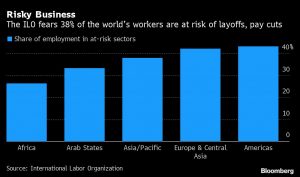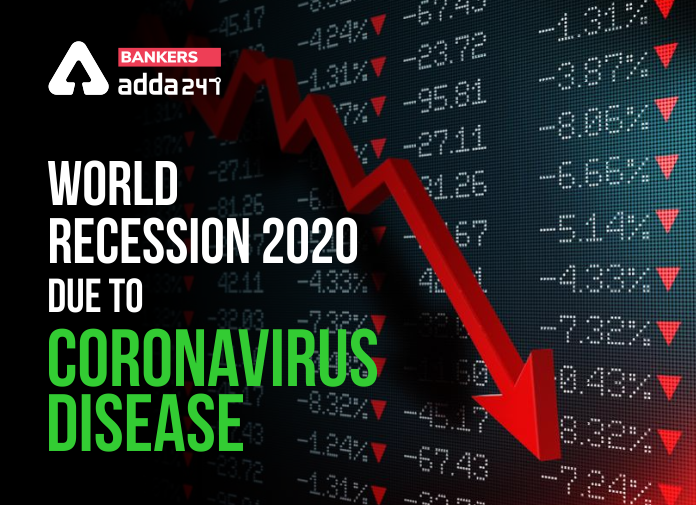World Recession 2020: There is no doubt in the fact that we, as a world, are currently facing the most significant medical and economic crisis in all of history. And with this crisis, we are looking at an impending recession, if it has not already started, while we have little to no resilience to meet this upcoming disaster. On 14 April, the International Monetary Fund (IMF) slashed India’s growth estimate for FY21 to 1.9% from 5.8% estimated in January, stating undoubtedly “the worst recession sice the Great Depression.” Experts believe that coronavirus pandemic will shrink the world output by 3% in the year 2020- IMF stated in April Update of its World Economic Outlook (WEO).
Also Check,
- WARRIOR | Banking Awareness Batch for SBI, RRB, RBI and IBPS Exams | Live Classes
- Bank Extreme | Complete Preparation for Bank Exams
The spread of the Novel Coronavirus and the eventual disease COVID-19, has started what seems like a downward spiral motion for financial markets all around the world. And this is happening even after the many emergency measures taken by central banks across Europe, America as well as Asia and Australia.
With the coronavirus infection affecting an increasing number of people globally, the world economy is already experiencing a recession, especially since all economic activities have been hit due to the deadly virus. This news comes in after there a rapid fall noted in stocks, bonds, gold and commodity prices across the world, which underlines the severe economic damage that the world is going to face from the outbreak of coronavirus.
Along with this, economists across the globe believe that the longest global expansion on record will most likely end during this fiscal quarter, with a world recession taking its place between March and May. Additionally, economists have also started to forecast the possibilities for a slowdown in a lot of the world economies. They think that COVID-19 has triggered what is known as forecast leapfrogging.
Throughout the world, the most significant economies hit by COVID-19 include all of Europe as well as the United States. These parts of the world will undoubtedly experience negative growth, more so because they are the worst hit and affected by the virus, with deaths tolling to thousands every day. China, on the other hand, will experience a mere positive growth of at least 1.5 per cent. The world recession of 2020 caused by COVID-19 is expected to be of a similar magnitude to the recessions of 1982 and 2009, if not worse.
| What Are NBFC And Their Functions | Operation SHIELD Launched by Delhi Govt | SEBI Grade A Officer Vs. RBI Grade B Officer | Can a clerk become a manager? |
The forecasts done by central banks around the world for the global GDP of 2020 ranged between -2.0 per cent to +2.7 per cent. However, with the number of cases of coronavirus increasing, the disruptions in the world economy are also on the rise. The global GDP growth forecast has now been cut to 1.25 per cent for this financial year. And while this cut is less severe as compared to the recessions of 1982 and 2009, it is still worse than the mild recessions that the world faced in 1992 and 2001. And it is because of this that we can now expect recessions not just in the US and Europe, but also in Japan, Canada and possibly India as well.
Many questions are arising such as “Just how deadly could a coronavirus-induced recession be?” COVID-19 has so far claimed more than 100 thousand lives accross the globe but how many lives will this world recession consume?

With the national as well as global GDP falling drastically, a recession is all but natural, even in countries that are less affected by the coronavirus disease. However, it is the need of the hour to remain motivated in tackling and eventually stopping the spread of the pandemic, while the world, as a whole, tries to get back together to a better tomorrow.
Click Here to Register for Bank Exams 2020 Preparation Material
| Credit Rating Agencies in India | IMF releases “World Economic Outlook” | Different Types of Banking | Consumer Price Index: Definition, Types, Measurement |



 Daily Current Affairs 21st April 2025, I...
Daily Current Affairs 21st April 2025, I...
 Fillers Questions for SBI PO Mains Exam ...
Fillers Questions for SBI PO Mains Exam ...
 Weekly One Liners 14th to 20th April, 20...
Weekly One Liners 14th to 20th April, 20...





